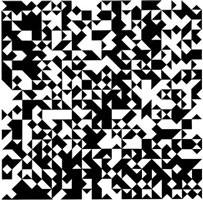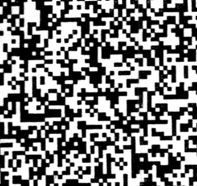Introduction- This proposal for an improbable monument will called the Manifesting Futures monument, and will have a tall column with a pedestal that displays a three dimensional holograph of Lady Justice. It will not be a static monument because the public will be able to choose what they want to periodically display instead. My intent was to rethink the entire notion of a traditional monument as a public marker of memory.
Background- A few ideas led me to this improbable monument: values and ideals, the concept of time, and the holographic model of the universe.
I came upon the subject of values and ideals, from researching the concept of monuments; monuments typically embody an ideal—oftentimes, from an historical moment that was meant to be remembered. The Dewey monument in San Francisco’s Union Square personally conjured a negative reaction. Replacing the current monument was at first, an emotional response—an attempt to ‘fix’ my American history. Personally, I think the Dewey monument has an implicitly justified arrogance that once was considered the “spirit” of the country. (Remember Manifest Destiny?) Having such a monument in the center of Union Square, the heart of the radical city of San Francisco, seems insensible. The values and ideals the Dewey monument exemplifies, not only are pas en vogue, but also, I think, proven to be of the wrong essence. We’ve come so far in the decolonization of the minds of minorities. To keep this present monument as a part of San Francisco’s current culture is a physical representation that fosters the same spirit of Arizona’s animosity toward Mexican immigrants and what allowed the internment of legitimate Japanese American citizens. I don’t see why it must remain a part of San Francisco’s current culture.
The next concept I’ve incorporated into my improbable monument is that of time. The Occidental way of thinking, time is linear; the Oriental way of thinking sees time as circular or cyclical. What divides time into past, present and future? According to the Growing Universe theory, more commonly known as Growing Block Universe, the past and present are real but the future is merely potential. Manifesting Futures is based on this theory: though the future is indeterminate, we have our present to help shape the future.
In relation, I’ve read Michael Talbot’s book, The Holographic Universe, which was instrumental in shaping how I perceive reality. His book begins with this quote from Karl Pribram’s interview in Psychology Today,
“It isn’t that the world of appearances is wrong; it isn’t that there aren’t objects out there, at one levels of reality. It’s that if you penetrate through and look at the universe with a holographic system, you arrive at a different view, a different reality. And that other reality can explain things that have hitherto remained inexplicable scientifically: paranormal phenomena, synchronicities, [and] the apparently meaningful coincidence of events.”
Talbot's book The Holographic Universe suggests that the universe is a hologram. After examining the work of physicist David Bohm and neurophysiologist Karl Pribram, both of whom independently arrived at holographic models of the universe, the book argues that a holographic model could possibly explain supersymmetry and also various paranormal and anomalous phenomena and is the basis for mystical experience Superstring theory as the basis for the use of holographic display.
The pursuit of advances in technology is an earmark of the future. Instead of looking back at the past through this monument, the monument is designed to be representative of the future’s potential. We keep looking back into the past when we really should be using the present to shape the future.
Project Description-
Detailed description: a 3D holographic display will be featured on top of a column.
What it represents, signifies, commemorates- the future, technology, everyone’s values
Why it is important- creates a truly public space
Where it is located and why chosen this particular- It will be located in the center of San Francisco’s Union Square because it is considered the heart of one of the most radical cities in the world.
How it works, what it does, what it looks like, what its made of, what the size is, etc.
How people view it and or interact with it- The computer and servers that create the display will be located in the underground parking garage beneath Union Square; it will be accessible to the public to change the display and to look through display archives. Also, a website will allow people to create and upload 3d models of what they want displayed.
Why it is improbable, how it challenges conventional monuments- the concepts behind the monument, such as looking to the future instead of commemorating the past makes it improbable. Also, the removal of the current Dewey monument is highly improbable. Lastly, the cost, and availability (outside of military use) of the technology needed for this monument makes it very difficult to be realistic.
Total Projected Cost- $2,282,721.00
Breakdown:
- Equipment: $753,721.00 (9X HD6400 Video Server, Video Wall and installation, Optoma PK201 Projectors, Tripod Heads, Bell Computers, Firewire 800 cables, HDMI Cables, 8.5 mm C-mount lens, Custom lenticular material, Aluminum Framing Materials, Firewire Cameras, and Point Grey FirePro PCI Express Card- Dual Bus)
- Employment: $904,000.00 (Seven board members @ 65,000/annual, five engineers @ $50,000/annual, six construction workers 960 hrs. @ $25/hr, two administrative assistants @ $30,000/annual)
- Maintenance: 625,000.00 ($25,000/25 years)
Timeline
- Create Manifesting Futures Monument Board of Trustees
- Begin grant writing process for funding and subsequent endowment
- Finalize monument proposal with Board
- Submit monument proposal to the San Francisco Arts Commission and San Francisco Planning Department
- Subsequent approval from aforementioned
- Acquire necessary permits
- Hiring of staff: administrative assistants, engineers & construction company
- Community meetings for San Francisco residents’ input regarding Dewey monument
- Removal of Dewey monument and its’ relocation, destruction or reappropriation
- Breaking ground ceremony and construction
- Soft opening for important guests
- Opening for the public

























 s
s

















